Larps—American freeform games among them—have the potential to create sensory experiences surpassing the limits of language. Perhaps because larps have so long been associated with theatrical works,1 we often refer to them in the language of theater, and so too focus on strictly their linguistic properties.2 Larps have loose pre-written “scripts” that guide the improvisation of an experience. Depending on the style of the larp, play might already be structured around a plot or narrative, prioritizing specific authorial voices. Sometimes larps co-opt the language of film and video by considering how a scene is “framed” or where the “audience” can be presumed to be.
But although the language of theater may feel natural to larp, to speak of it solely in these terms underestimates the importance of non-linguistic engagement. As arts-based education researcher Elliot Eisner tells us, “meaning is not limited to what words can express.”3 Works that explore what it is to be other than we are will indeed incorporate stimuli beyond words, and we must take these somatic stimuli seriously. To do so requires redirecting scholarly attention to the environments in which games happen, keeping in mind arts-research Graeme Sullivan’s dictum that “as contexts change, meanings change,”4 and to consider how a change in those environments changes the experience of play.
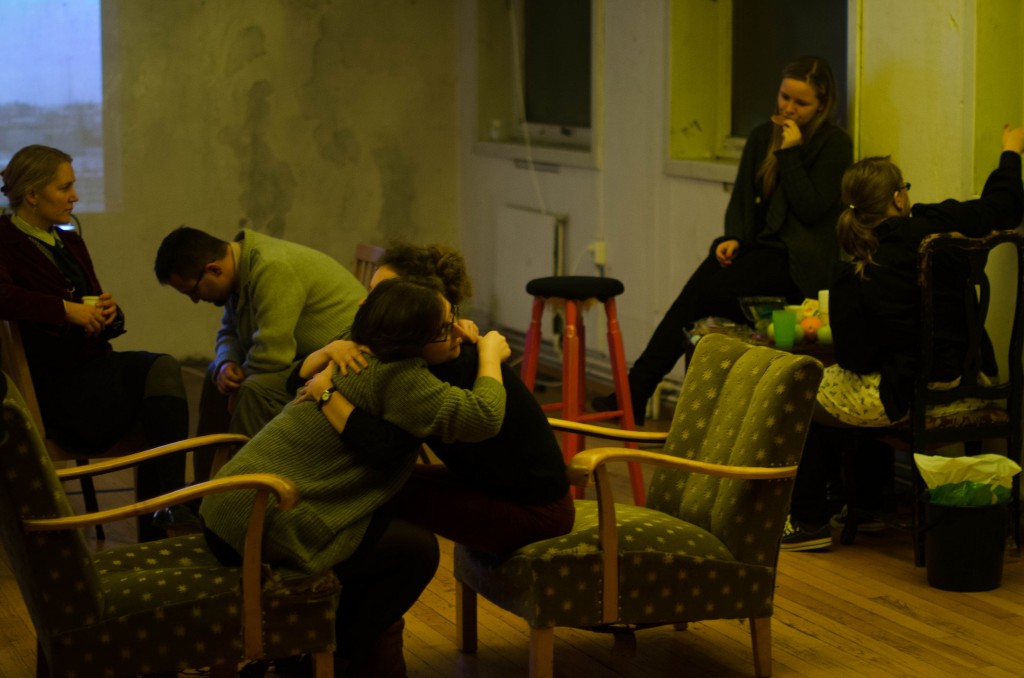
Framing and Freeform
My own perspective on larp as a professor of art education and the particular types of larp I employ—American freefom games—heavily inform my analysis. I use larps as instruments for collaborative arts-based inquiry regarding ideas, situations, and emotions that are difficult to access through traditional means of research. The artistic encounters experienced by communities of play5 present opportunities for members of these communities to have experiences normally inaccessible to them in their lives, thereby allowing for the participants to understand what it is like to be other than they are.6 The collaborative nature of these experiences generate inter-subjective space of “shared symbolically-mediated meanings”7 that enable the community of play to create and recreate identities on both individual and communal levels. My dissertation on arts-based inquiry and American freeform8 applied these ideas by investigating communities’ enactment of scenes from the point of view of students, parents, teachers, and administrators in an imagined educational community.
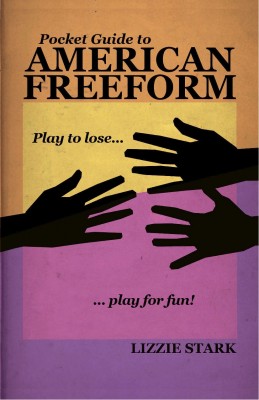
Larpwright and journalist Lizzie Stark describes American freeform as “a style of rules-light, story-oriented, one-shot, live or semi-live (freeform) roleplaying scenario design”9 It is light on props and costumes, and is known for the incorporation of “meta-techniques.” Meta-techniques are mechanics that interrupt the narrative, heighten the drama, inject uncertainty, and/or provide the players with insight that remains hidden from their characters, essentially disrupting illusory experiences in favor of investigating cognitive spaces.10
What does or does not “count” as American freeform is (somewhat intentionally) vaguely defined, a factor that suits it as a medium for collaborative research as it encourages diverse experiences for the communities of play. Participants have the ability to incorporate what is already familiar to them, allowing them to already enter the larp with a degree of expertise, thus making the games accessible to players with different levels of experience.
Immersion, Identity, and Environment in American Freeform
Because I’m speaking of the environmental impact of the space on a game, the nature of immersion in an American freeform game must be addressed. William J. White, J. Tuomas Harviainen and Emily Care Boss11 note that the precise meaning of what is meant by “immersion” greatly depends on the culture of role-playing from which a speaker originates. They contrast indie tabletop RPGs’ focus on encouraging particular shared experiences with the individual psychological experiences encouraged by the Nordic games movement jeepform. The mimetic and meta-level nature of American freeform, in which constant and ongoing negotiation of what linguist and games scholar James Gee identifies as the perspectives of the players, their characters, and a hybrid player-character transpires,12 uses the tension between such perspectives to move back and forth between shared and individual experiences. This fluidity provides the tools to enact what Gee describes as a “good role-playing game,” as it creates a space to “think new thoughts about what I value and what I don’t.”13 By choosing and inhabiting the role he/she creates through action and game-play, a player’s connection between context and interpretation is pushed into the foreground. Somewhere in the amalgamation of assumed and extra-diegetic identities involved in the game, players construct an ever-changing “core identity”, representing player beliefs.
According to Marinka Copier, the negotiation of roles and boundaries is integral to games and game play.14 She highlights how the trope of the ‘magic circle’ as a boundary between real life and play is actually far more permeable than it initially appears to be. Because the theoretical membrane between those realities is transparently and repeatedly pierced in American freeform, there is a tension in that negotiation, a state of play that encourages players to actively interpret and re-interpret the experience.15 In this sense, the goals of most American freeform players do not fit the divisions Mike Pohjola outlines in the Manifesto of the Turku school.16 They are not specifically focused on trying to “win” the game (gamist), to act out a story (dramatist), simulate a working society (simulationist), or to completely inhabit their characters (eläytyjist), but rather participate in the game in order to have the experience of the game itself. The impact of the game is simultaneously an experience that can be shared with other players while simultaneously being intensely personal and emotional. This duality encourages what arts educator Maxine Greene refers to as “communitas,”17 a unifying shared experience that still preserves individual interpretations and differences.
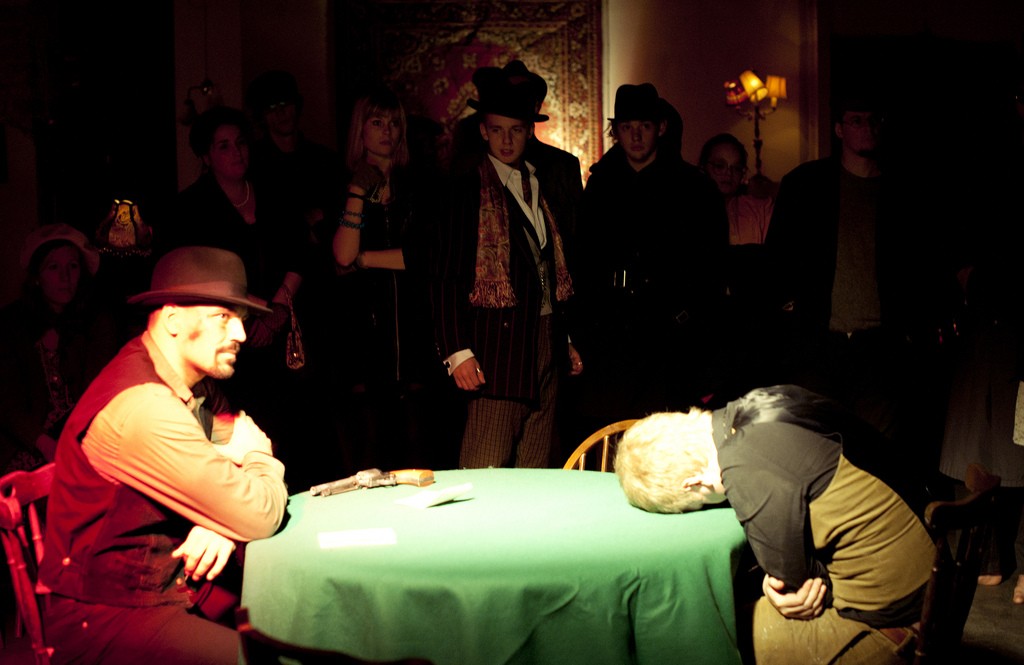
Social environments constructed in American freeform games are enmeshed with the physical environments in which the game occurs. A game’s environment incorporates the design ideas of the creators to emphasize particular actions or ideas and, in doing so, shapes a theoretical space in which the play will occur.18 To realize this space, the players of the community of play contend with what Evan Torner identifies as practical and logistical considerations, such as the money, time, and travel limitations of the players.19
However, each community of play also has their own specific affordances, such as the knowledge base of the players, the versatility of the environment in which they play, and the community’s capacity for manipulating that environment. The resultant gameplay occurs at the intersection of the players, the game, the environment and the social context. Because American freeform uses relatively few props and typically can be completed in a single session, its physical environments tend not to focus on mimetic reality but instead on crafting an emotional environment that reinforces particular themes.
Illustrations of Environment in American Freeform
Keeping the above in mind, the construction of environment in American freeform games can be understood along the lines of Katie Salen and Eric Zimmerman’s schema for meaningful game design: an intersection of rules (the organization of a system as designed by its creator), play (the manner in which players experience and modify a system), and culture (the social and physical contexts engaged with and inhabited by the game).20 These intersections produce the individual and collective narratives of the community. According to Henry Jenkins, environment fosters immersion in such narratives “in at least one of four ways: spatial stories can evoke pre-existing narrative associations; they can provide a staging ground where narrative events are enacted; they may embed narrative information within their mise en scène; or they provide resources for emergent narratives.”21 Three different games illustrate this principle: Jason Morningstar’s The Climb,22 Rafael Chandler’s ViewScream,23 and Lizzie Stark’s In Residency.24 These examples are not meant to be exhaustive, but rather reveal the impact of and possibilities for sensory environments in American freeform games.

The Climb
The Climb is designed as a GM-less scenario in which a group of four to six mountaineers (the players) are making an illegal first ascent up a mountain. This expedition could theoretically result in a high degree of fame and prestige for the climbers, but includes catastrophically dangerous risks. Aside from those dangers, the characters have conflicts with one another that make trust scarce. The overarching feeling is of isolation and loneliness, a feeling reinforced by the premise, characters, and environmental factors that Morningstar has put in place.

In The Climb, movements and locations of the players are limited in the first half of the game to three small areas that represent the “tents” of the base camp while the sounds of a blizzard are played from an mp3 file. Although the game can be played without the soundtrack, its inclusion is highly effective for establishing a context and for the pacing the game.25 The constant wind and experience of either being cramped or abandoned in the small spaces enhance the tense atmosphere and feelings of isolation, creating bleed through artificial movement restrictions and suggestions of inclement weather. The sound of the blizzard breaks at the thirty and forty minute marks, when there are weather reports in Chinese. Diegetically, this alerts the characters—particularly Sweet, as the meteorologist—that if they are going to send a group up the mountain, they must do so soon. The soundtrack mechanically controls the pacing of the game and adds a certain discordant “out of place” feeling to the piece.
At the forty-five minute mark, there is one minute of silence, during which players split into two groups: three players go to a new space (ideally out of range of sight and hearing) to construct what is essentially a “radio play” of what happens on the summit, which is communicated by walkie-talkie or by cell phone. Meanwhile, the other players remain as support at the base camp and react to the story the ascent team creates. The soundtrack and game itself end after ninety minutes, followed by a debriefing session.
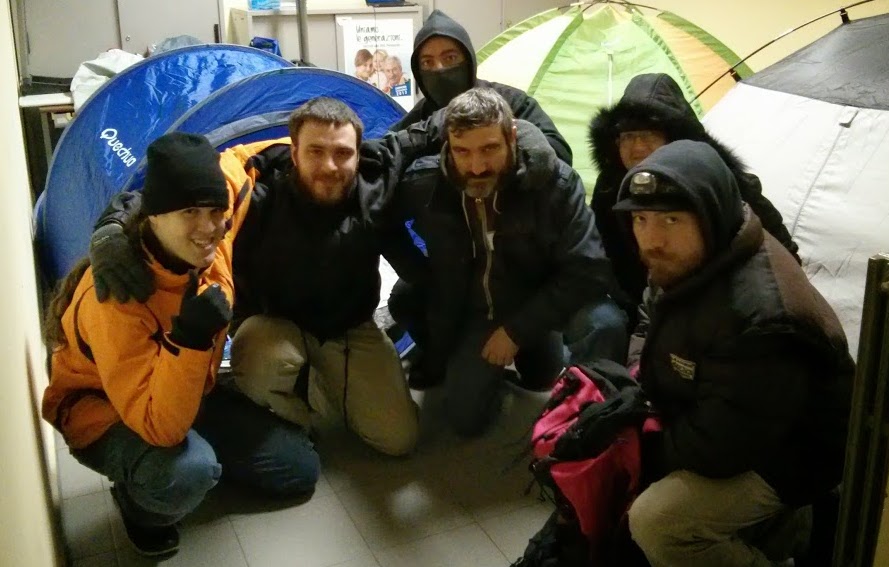
I have run The Climb for several communities, but the run I consider the most successful was set at a gaming convention, a context which fit the tight structure and pacing (although it also technically “broke the rules” by including one too many players.) The affordances of the convention center meant that we had access to two secluded, relatively comfortable rooms, wherein the lights were controlled via dimmer switch. Because of some late arrivals, I removed myself from gameplay and instead focused on facilitating. These variables greatly affected the game. In addition to the regular play materials, I had prepared lanyards that displayed each character’s name, provided small flashlights for each player, and used masking tape to denote the “tent” areas that each had an opening (a break in the tape) that faced inward toward the other “tents.”
The introductory narrative describes how the raging snowstorm alternates between extremely bright and dark conditions, and during play I adjusted the lights to reflect or suggest moods to the players. I also removed my shoes, allowing me to walk very quietly on the carpeted floors and blend into the background while listening into the conversations. I would change the environmental variables to suit emergent play. Because I was not playing a character I was on hand to provide direction to the “ascent team” in the second act, and to use their decisions to anticipate what environment would be most effective for the “base camp” players.
The most poignant moment for me was when Sweet had to be left alone at the base camp for her health while a rescue party was sent up for what was left of the summit team. I left her alone in the room as well, sitting in her “tent” under a spotlight. Later, the player told me she prized that existential loneliness even as it also bled into her own struggles with depression.
ViewScream
Rafael Chandler does not call his game ViewScream an American freeform game, instead referring to it either as a “live-action game designed for play using video-chat software like Skype or Google Hangouts” or as a “varp” (video-augmented role-playing game). Nevertheless, it shares some of American freeform’s essential characteristics and an innovative environmental mechanic. It is also a GM-less game, with the expectation being that players leap into their roles as soon as the chat begins and never break out of character until play ends. It presents several adventures that follow the same general premise: a damaged spaceship and its four remaining officers (Medical, Bridge, Weapons, and Engineering) face imminent destruction, a fate they must confront together even while they are only able to communicate via the ship’s viewscreens. Playing ViewScream requires that players have a clear set of expectations, both because familiarity with the setting and rules helps keep players from breaking character, and because the system and the theme conspire to create an ending wherein at least one character will die horribly. The basic gameplay is that each character has three problems which only one of the other characters can solve, improvised over the course of several scenes.
The text of the game breathlessly asks:
“Will you turn on your shipmates? Will you work with them, even though some of them may be guilty of horrific crimes? What happened to the rest of the crew? How many minutes do you have before it happens to you, too? Can you escape, or will someone find your mangled corpse floating in the void?”26
ViewScream essentially transforms attributes that would break immersion in a larp—the personal distance and lack of physical interaction of online chats—and co-opts them for a tangible representation of the characters’ diegetic experiences. The stories the game presents concern the panicked, fearful, and angry responses of the characters to the dire situation they face, and the enforced helplessness of literally being cut off from one another reinforces that fact. While the scarcity of resources determines play in the mechanics, it is the presence or absence of sensory data that matters for the lived experience of the players. However, the diegesis is necessarily founded on trust between the players, who describe the ship and its hazards with evocative language rich in sensory detail. Players are encouraged to fill dead air as much as possible to keep play from going stagnant and to maintain the tense atmosphere through a constant barrage of words. Even when they are not speaking, the players are asked to contribute and signal their emotional state through their body language. At the end of the game, each character has a few final words as they either escape the ship or realize that their demise is imminent, after which they switch off their camera and deprive the remaining characters of even that tenuous connection.
Chandler offers some suggestions for players to further tailor their experience by further manipulating their environment,27 offering suggestions such as using specialized lights, wearing costumes, or creating a backdrop. This is interesting because it is a collaborative effort, with each player altering their own space rather than a single player orchestrating everything, and because those alterations are largely done for the benefit of the other players rather than for the person actually creating them. Chandler further suggests that mobile technology could allow one or more players to move the play outside of a single room and to act as a member of an “away team,” or that additional players could be recruited to represent the threats a more mobile player might face. This incorporation of techniques and ideas prevalent in ARG (Alternate Reality Game) experiences, in which the events of a single story are told through multiple platforms,28 opens up new possibilities for technology in American freeform by altering its role from something that enables play to something central to the play experience.29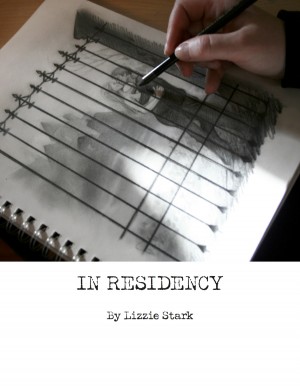 In Residency
In Residency
Lizzie Stark created In Residency to explore ideas, themes, and experiences she found prevalent in the art world, and to make those experiences accessible to players who were not professional artists. It was inspired by her own time at an artist’s colony, wherein she found juxtaposed within the cloistered walls of the colony “the loneliness of creating art with the sometimes claustrophobic social atmosphere of the colony.”30 She admits that the result has been designed to be more dramatically charged than her own experience, but it nevertheless offers a unique insight on the professional, social, and personal highs and lows in the arts.
Stark employs several techniques in her game that are common to parlor larps, such as a signal between characters that indicates one ought to improvise a monologue (in this case, a fist bump), or a bell to indicate the beginning or ending of particular scenes.
Where the game is truly innovative, however, is in its demarcation and application of communal and personal spaces. The physical space is divided into two large areas and one smaller area: the veranda, in which characters hold serious conversations about their work; the pool house, where characters relax, engage in debauchery, and actively cross social barriers (such as by telling secrets or destroying artwork); and the sculpture garden, which serves as an “off-screen” space for narrative events (such as sex) or for players to take a break as needed. She suggests appropriate lights, furniture, and sound for each setting to create the ideal atmosphere, most significantly the sheet that represents the pool. If a character is on top of the sheet, they still have their bathing suit on. If they are underneath it, they are skinny-dipping. Once three or more people are in the pool, the majority rules and everyone in the pool is either in suits or skinny dipping. These affordances and rules encourage players to engage in specific public/private behaviors.
Each of the physical spaces is focused on particular forms of socialization, and contrast strongly with the intensely personal experience of the guided meditation with which each act of the game begins. During the meditation, the players are instructed to find a space of their own and to listen with their eyes shut as the facilitator describes the sensory input that is feeding their creative efforts for the day and asks questions they tailor to their own particular experience. For this game, the art a character creates is connected to some form of trauma that is meaningful for the character and which was chosen with some randomness at the start of the game. At the end of the meditation, the players open their eyes, the work day over, and are once again thrust into a communal space with one another.
This transforms artmaking in In Residency, whether the character creates it from tapping on a keyboard or on a slab of marble, from a visceral and embodied act into an internal exploration of what it might feel like to be an artist, and allows for experiences tailored to both the tastes of the player and those of the character. This is interesting because it troubles the difference between the emphasis on thinking about art in an academic sense—a concept that can be referred to as the aesthetic tradition—and experiencing art independently of conscious thought, what arts researchers Jan Jagodinski and Jason Wallin refer to as aisthesic thought. Where aesthetics attempts to understand a work by considering and comparing its different facets, aisthetics attempts to “go beyond perceptual standards”31 and to encounter the arts as a force that exists independently of the will of the artist or the viewer. In Residency renders this bifurcation unstable through a process of interpretation and reinterpretation enacted in the meditations, discussions, and revelries of the constructed environment in which the characters exist.
Conclusion
Environments in American freeform games are necessarily representative of the network that exists between the mechanics a designer puts in place, the context of play, and the innovations and alterations enacted by a community of play. But if games are, as art and games researcher Mary Flanagan would have it, “reality engines, frameworks for meaning making,”32 and if those engines are going to allow us to glimpse what it is like to be other than we are,33 then each member of that network must pay special attention to how that environment is constructed .
This is not to say that any one person will get it “right,” or that the dialogue around which so much play has centered is necessarily “wrong,” but that in considering these manipulations of environment we encounter new realms of experience and thought. In closing, I would like to repeat the words of games guru Bernard De Koven as a guide for developing these environments, in that “when we all own the game, when we all acknowledge that we are merely trying it on, seeing if it fits, because it might work, no matter who suggested it, we become remarkably, astonishingly empowered.”34
–
Featured image by Xi Lin on Flickr – “DSC_9340 Marcellos Kjeller Bergen, 2012,” licensed under CC BY-NC-ND.
–
Jason Cox, PhD is an assistant professor of Art Education at the University of Toledo in Toledo, Ohio. In 2015, he completed his PhD at The Ohio State University in Arts Administration, Education, and Policy with a specialization in Art Education. He has written two American freeform games, What to do About Michael? and Troupe, which represent his interest in exploring the tensions between individuals, ideals, and communities.


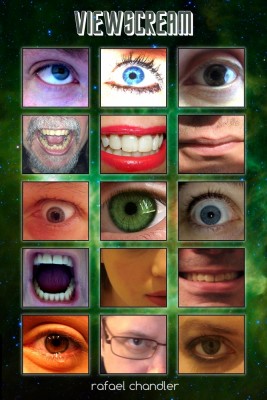
2 thoughts on “Manipulating Environments in American Freeform”
Comments are closed.